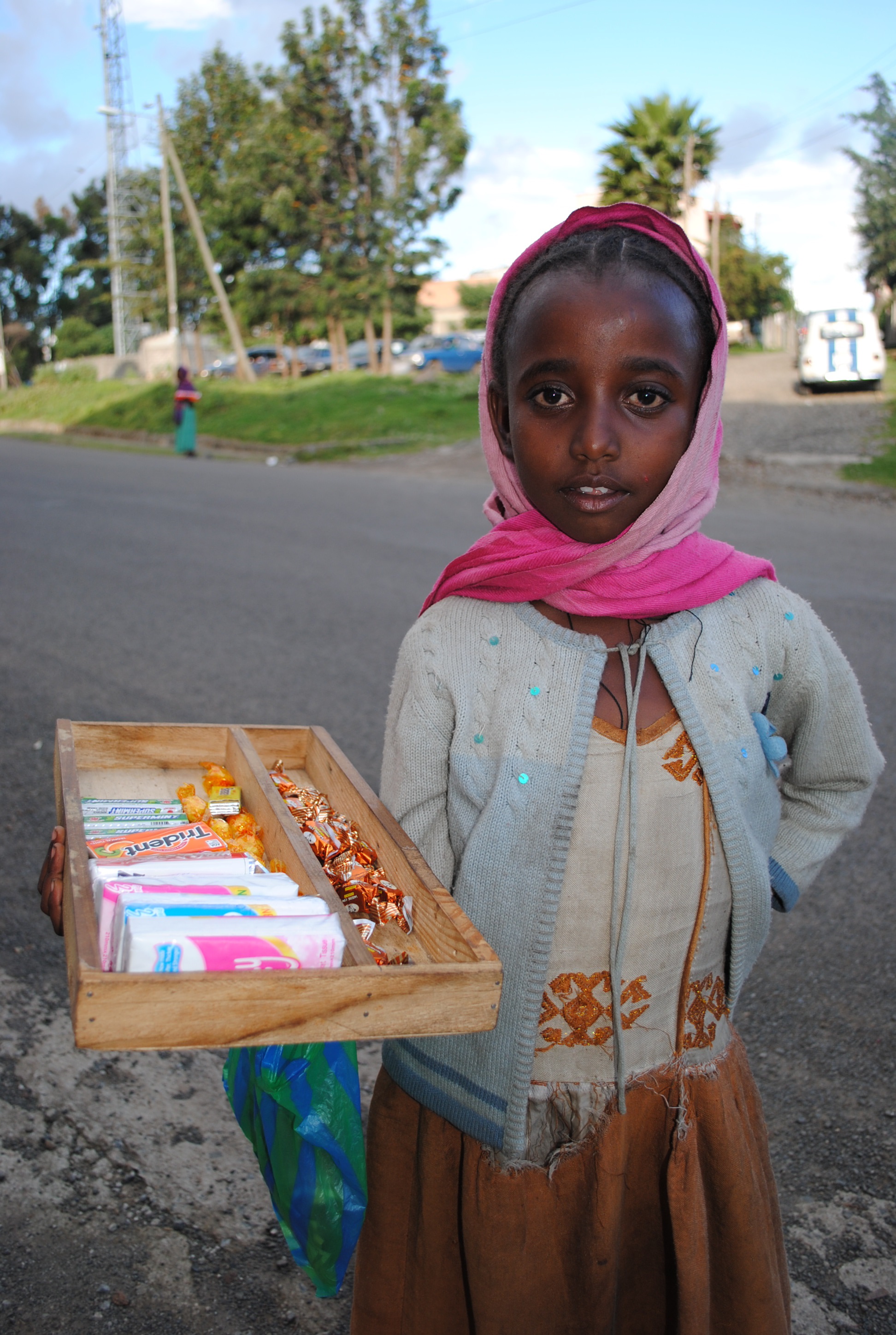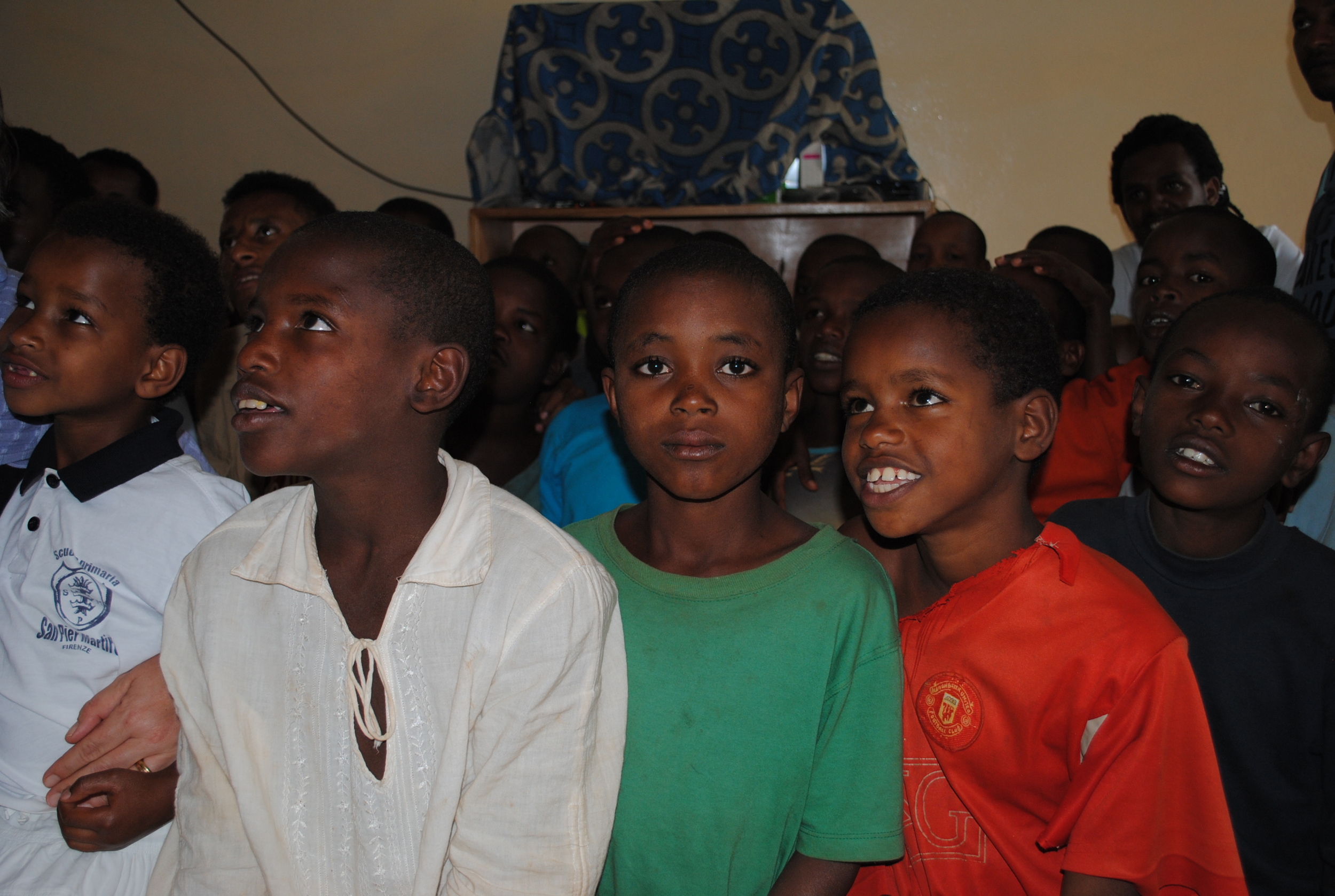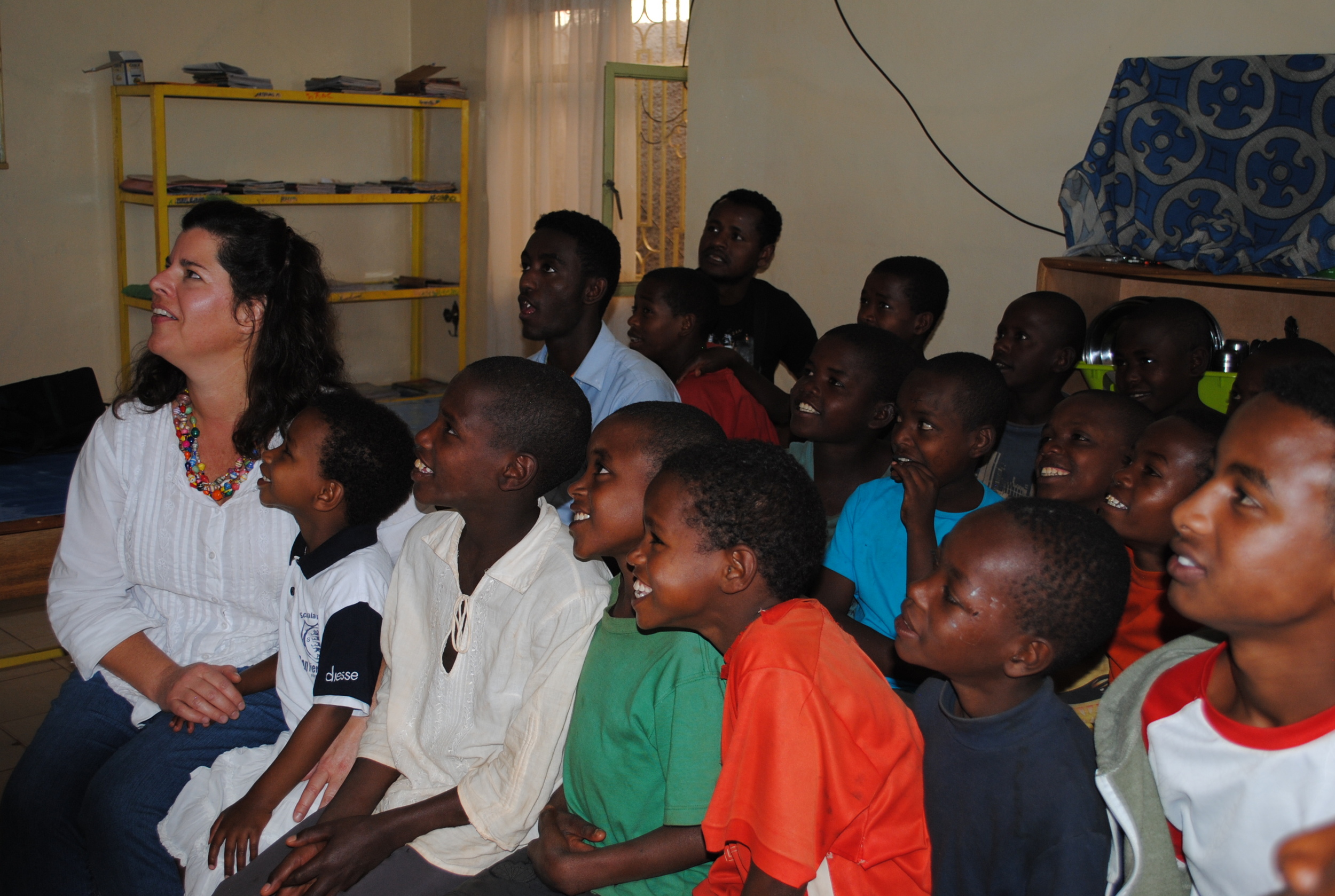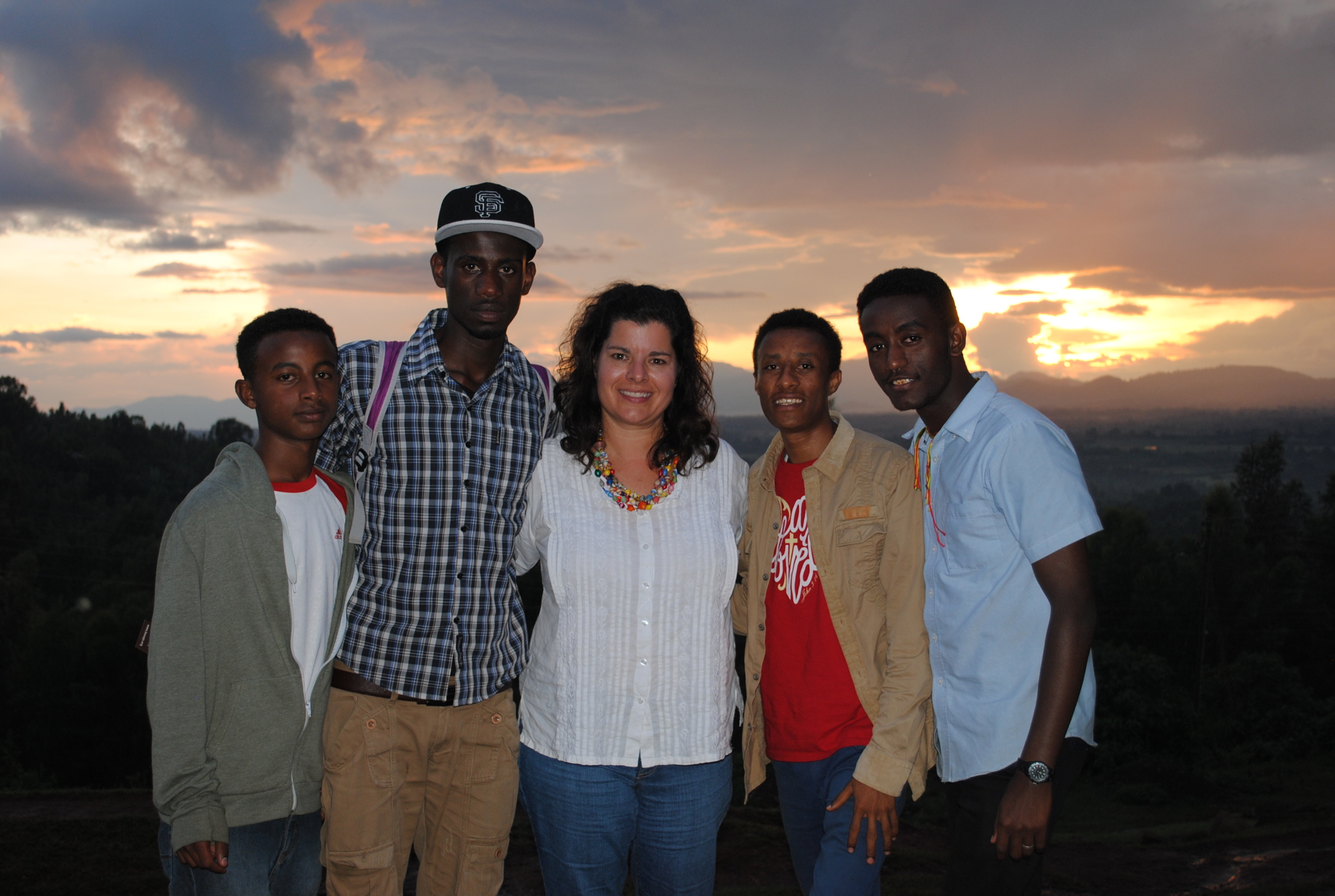October 6, 2014
First thing we accomplished was to ask Tilahun’s principal for permission for him to travel to Wolayta from Tuesday until Sunday. When we left the office (after getting the okay from the principal), Tilahun sighed a big sigh of relief in my ear and later told me that he had been nervous to ask the principal. Tilahun and three of the other four boys attend private school and one of the other boys attends college.
We drove to Korah to visit the women who make our jewelry. On the way, I noticed again how driving in Ethiopia is really a well-developed skill. Gecho is an incredible driver and is constantly navigating around goats, cows, dogs, donkeys, horses, people (lots and lots of people) and difficult road conditions. There is only one traffic light in the whole of Addis Ababa. There is the occasional traffic director but for the most part, the drivers use a system of hand gestures, body language and their horns to communicate.
Ethiopia has the second largest population in Africa (second to Nigeria) with reports of 91 million people. Approximately 80% of the population lives rurally. The volume of people and animals in the capital city is unbelievable to a Canadian. Everywhere you look in the capital city there are people. Children, women, women and their children and men live on the streets and beg or find ways of surviving. In a very short time, I saw old people, the disabled, young women with babies in their arms and children as young as five living on the streets.
Imagine how vulnerable these people are (especially women and children) when they have no shelter, no protection, no means to provide the basics of life for themselves. Many young girls and women are raped while they are living on the streets and pregnancies result from these rapes. For the women who have children, they then have a child to care for and protect while living on the streets. I saw an older woman begging on the streets with no shoes on. You could clearly see toes missing and the ends of her fingers gone due to leprosy. I saw men and women who clearly had some form of mental illness wrapped up in big blankets and very young children with no shoes, rags for cloths and sitting together with other children who were living on the streets.
I don’t think there will ever come a time, no matter how many times I travel in Ethiopia that I will ever be used to seeing such abject poverty. I think of the value we put on children and human life in our country and know that if anyone saw a child of 5 walking on their own, we would be calling the police to make sure this child was reunited with her/his family and was safe.
Arriving at the workplace of the women in Korah, I quickly saw faces we saw in June of 2013 when I was last in Ethiopia. The women were all working on our order and expressed their gratitude for our support. I saw Casa, a man who has no fingers due to leprosy and yet he is able to make mats beautifully. Korah is the poorest community within the capital city of Addis Ababa and is populated by orphans, men and women with leprosy, the physically and mentally disabled, widows, the elderly and individuals who have HIV/AIDS. Korah borders a dump and many people living in Korah go to the dump daily to look for food or anything they can sell.
Through our jewelry sales, we are trying to make a difference in the lives of the women and their children. 90% of the women who make our jewelry had never been formally employed before. They tried to support themselves and their children through begging, going through the trash dump and selling what they could from what they found. Buying the jewelry we bring to Canada is a way Canadians can help make a difference here in Ethiopia.
When I arrived back at the guest house, a very young girl came with her little wooden tray and things to sell. When we asked her if she went to school she said no because she was working to support the family. This beautiful little girl is probably no older than 7.



![ladies beading from side view[1]](http://static1.squarespace.com/static/5762b590e4fcb59bdd83f5a8/578eddd15149bf5948afb7cd/578eddd45149bf5948afb833/1468980692836/ladies-beading-from-side-view1.jpg?format=original)












![ladies beading from side view[1]](http://static1.squarespace.com/static/5762b590e4fcb59bdd83f5a8/578eddd15149bf5948afb7cd/578eddd45149bf5948afb833/1468980692836/ladies-beading-from-side-view1.jpg?format=original)
